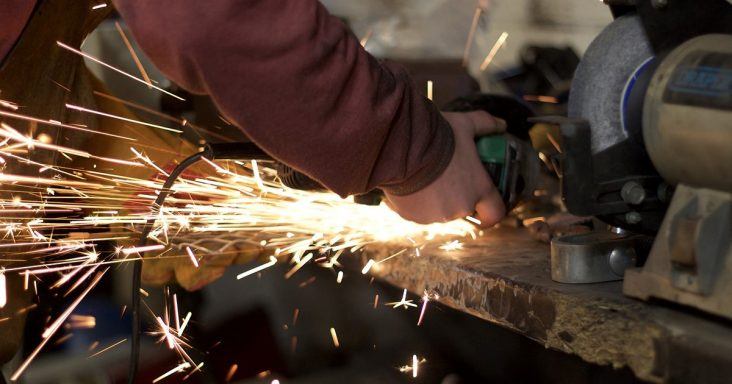Manufacturing activity rises at lower rate in November; PMI falls to 57.5%
by December 1, 2020 9:52 am 254 views

Economic activity in the manufacturing sector increased at a slower rate in November compared to October as the overall economy grew for the seventh consecutive month, according to the Institute for Supply Management (ISM). Meanwhile, labor issues amid the COVID-19 pandemic might limit increased productivity in the manufacturing sector.
The ISM released Tuesday (Dec. 1) the Manufacturing ISM Report on Business for November that showed the Purchasing Managers’ Index (PMI) fell 1.8 percentage points to 57.5% in November, from October. A PMI above 50% indicates the manufacturing economy is expanding.
The new orders index fell 2.8 percentage points to 65.1% in November, from October. The production index fell 2.2 percentage points to 60.8%. The backlog of orders index increased 1.2 percentage points to 56.9%. The employment index fell 4.8 percentage points to 48.4%. The supplier deliveries index rose 1.2 percentage points to 61.7%. The inventories index decreased by 0.7 percentage points to 51.2%. The prices index fell 0.1 percentage point to 65.4%. The new export orders index increased by 2.1 percentage points to 57.8%. The imports index fell 3 percentage points to 55.1%.
“The manufacturing economy continued its recovery in November,” said Timothy Fiore, chair of the ISM Manufacturing Business Survey Committee. “Survey Committee members reported that their companies and suppliers continue to operate in reconfigured factories, but absenteeism, short-term shutdowns to sanitize facilities and difficulties in returning and hiring workers are causing strains that will likely limit future manufacturing growth potential. Panel sentiment, however, is optimistic, an improvement compared to October.
“Demand expanded with the new orders index growing at strong levels; supported by the new export orders index expanding strongly; customers’ inventories index at its lowest figure since June 2010, a level considered a positive for future production; and the backlog of orders index expanding at a slightly faster rate compared to the previous three months,” Fiore added.
Consumption, which comprises the production and employment indexes, contributed to a combined 7-percentage point decrease to the PMI. Five of the top six industries had moderate to strong output expansion. The employment index fell after one month of growth as a result of the inability to attract and retain workers. Inputs, which comprise supplier deliveries, inventories and imports, continued to limit production expansion and at higher rates compared to October while inventory levels rose minimally and imports softened. Input improvement stalled in November and contributed marginally to the PMI. Prices continued to expand and reflected a shift to seller pricing power.
The following five of the six largest manufacturing industries reported growth in November: Fabricated metal products; chemical products; computer and electronic products; transportation equipment; and food, beverage and tobacco products.
“Manufacturing performed well for the sixth straight month, with demand, consumption and inputs registering growth but at a slower rate compared to October,” Fiore said. “Labor market difficulties, both current and anticipated, at panelists’ companies and their suppliers will continue to dampen the manufacturing economy until the coronavirus (COVID-19) crisis ends.”
In the computer and electronic products, machinery, plastics and rubber products, and the transportation equipment sectors, respondents noted supplier labor shortages that are impacting productivity.
A respondent in the food, beverage and tobacco products sector said “we are getting a lot more COVID-19 hits in our factories. We are also sending employees home for 14 days to quarantine if they were in close proximity to individuals that tested positive. We have had to shut down production lines due to lack of staffing. Cost of goods sold is much higher than normal due to labor and production inefficiencies.”
In the furniture and related products sector, a respondent said sales are steady but down 30% year-over-year. The respondent noted that work hours for production are rising, but several employees remain on lay-off.
A respondent in the primary metals industry said “our business is booming, as many customers need products ASAP. A great situation.”
